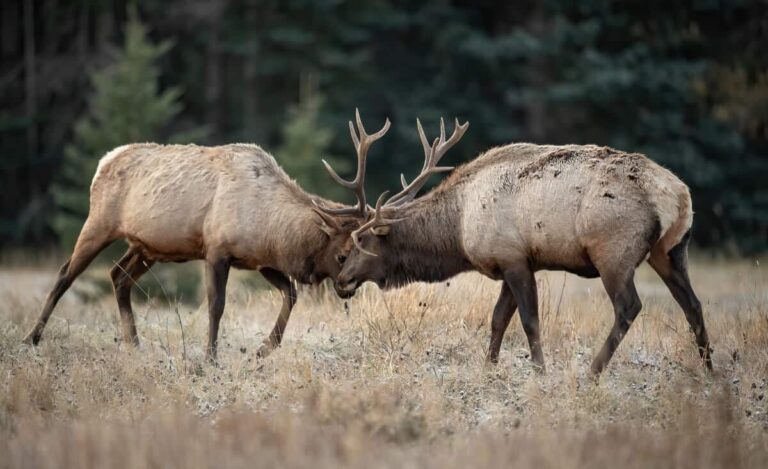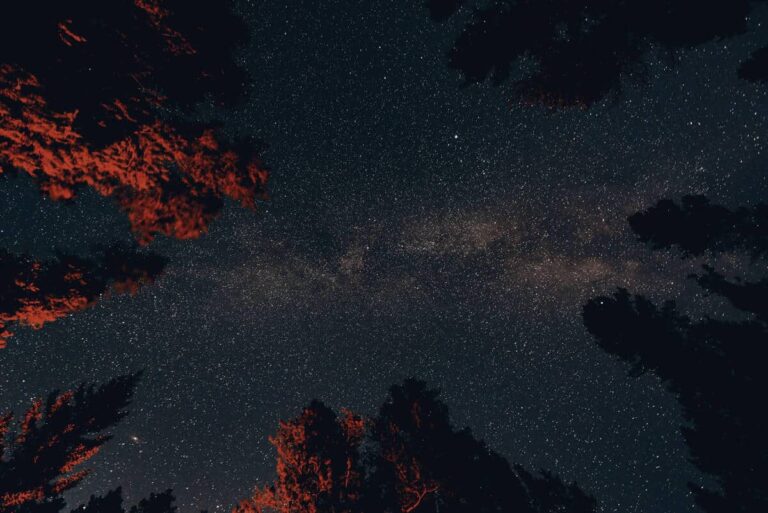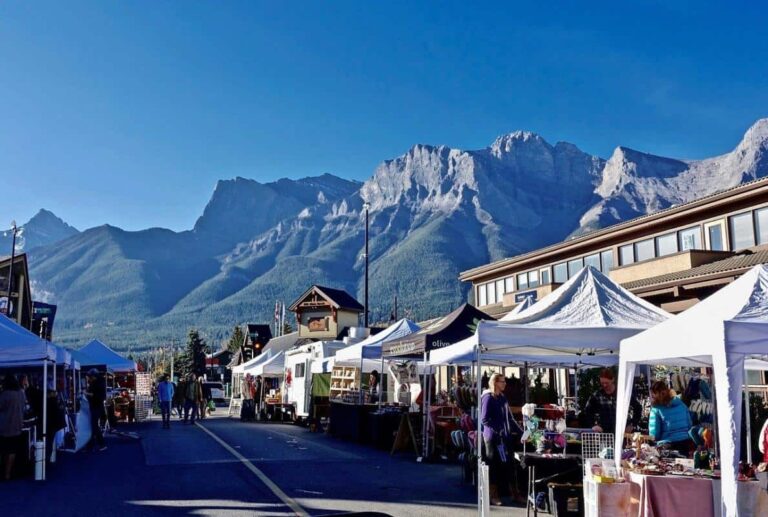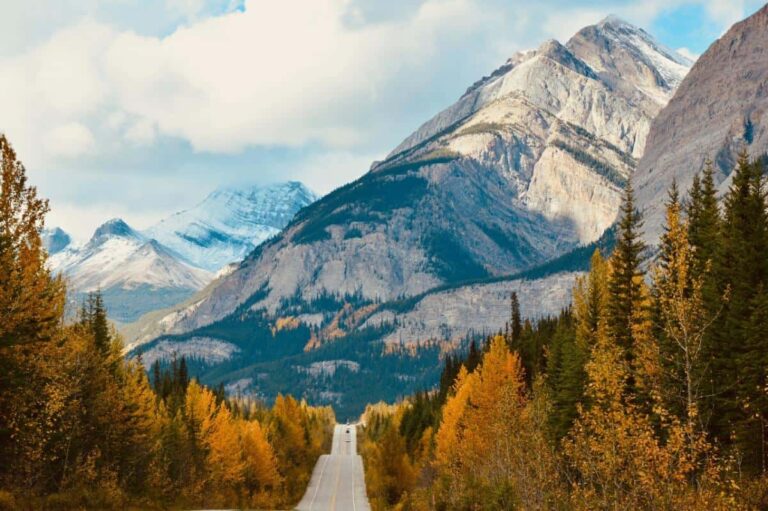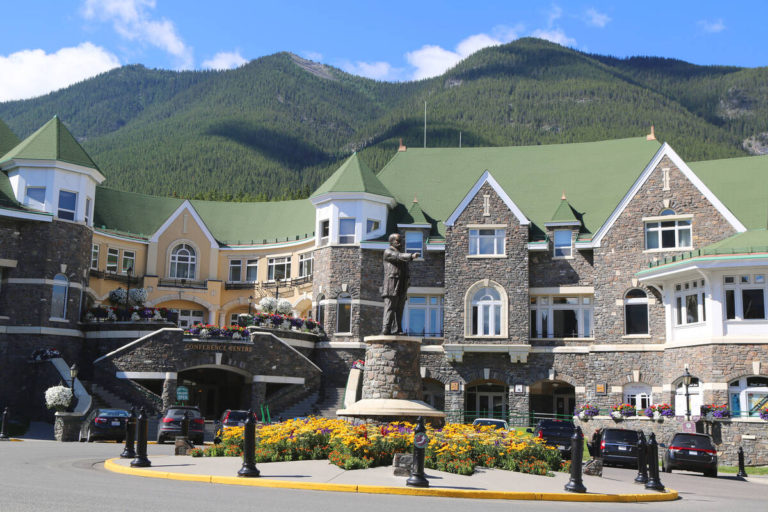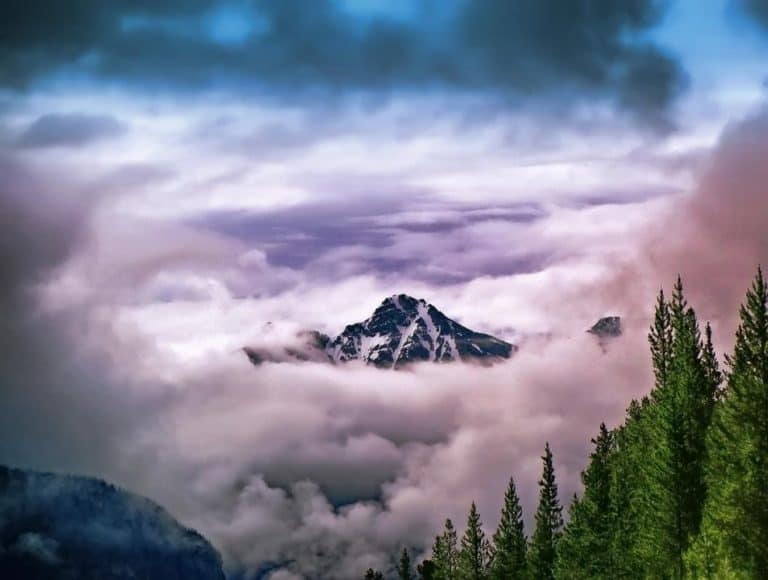Guide to Wildlife in Banff (Know How to Deal With Encounters)
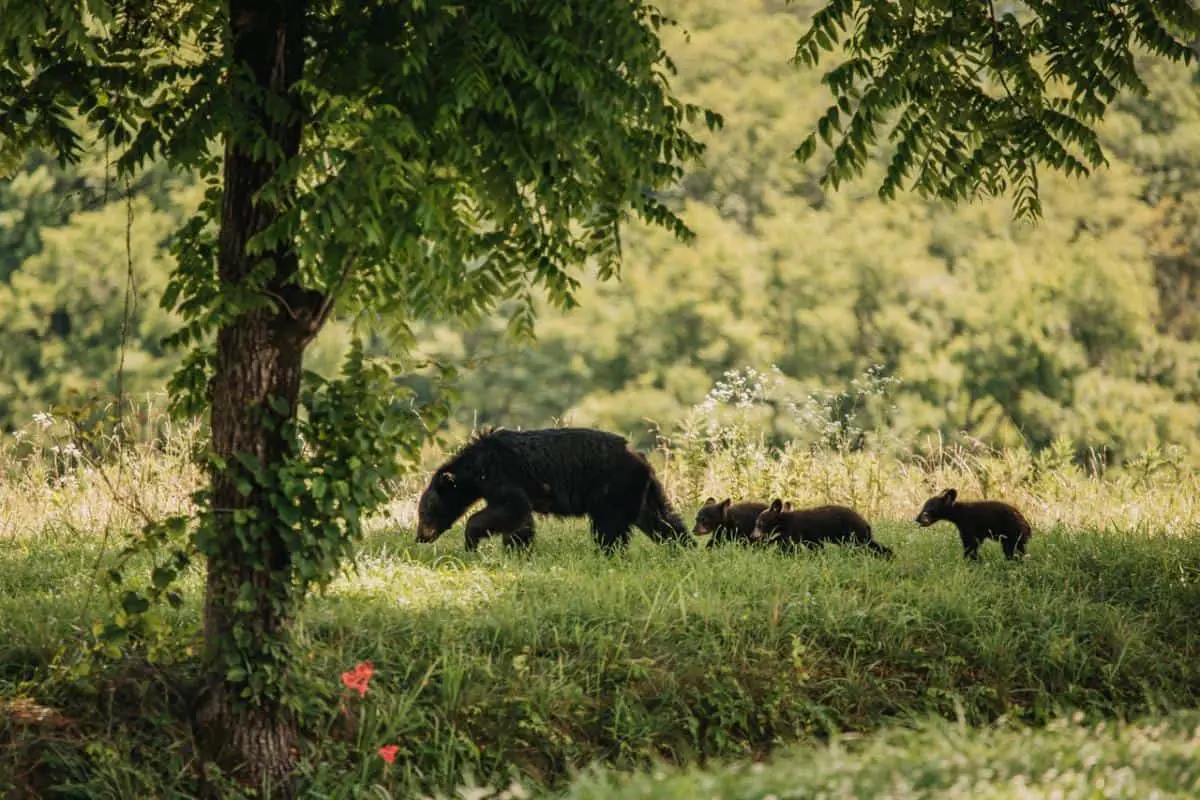
Visiting Banff National Park is all about experiencing nature in its most pristine way, and wildlife is a prominent part of that. It gives the park an exciting edge. What kind of wildlife can you spot in the park and where?
Bears, without a doubt the most famous or – if you wish – notorious mammals of the Rockies. Visit the average gift shop in Banff or Lake Louise and you’ll find tons of bear merchandise. The bear has become synonymous with Banff National Park, but the park has so much more fauna that’s worth seeing or knowing about.
What Wildlife Does Banff Have to Offer?
You would be surprised how many species of mammals call Banff their home. According to Parks Canada’s website, the park is home to more than 53 species of mammals. Some of the most renowned I’ve listed below.
Bears
Bears are the animal every park visitor wants to see during their visit to the park, but not too close, please. These predators are the most prominent mammal of the Rockies and, yes, one of the deadliest. In Banff National Park, there are two species: the black bear and the grizzly bear.
They may be fearsome and dangerous, but the chance of you getting in trouble with a bear is minimal. It is estimated that there are between 856 and 973 grizzlies in Alberta, of which approximately 65 live in Banff National Park (2021). That estimate lies around 40,000 for black bears in Alberta. Of those, only 20 to 40 live in the park.
ALSO READ: Where to Spot Bears in Banff
Differences between Black Bears and Grizzly Bears
There are some apparent differences between black bears and grizzly bears. However, telling them apart is not always as easy as it may seem. Probably the most distinct feature that sets a grizzly bear apart from a black bear is its pronounced shoulder hump.
Another difference is its much larger claws. In general, you could also say that a grizzly is significantly larger than a black bear, but this doesn’t necessarily have to be the case. Also, a bear’s coat color is not a clear indicator. Both species come in many different colors, ranging from blonde to black.
Bighorn Sheep
Bighorn sheep owe their name to the curled horns of the rams. It has a brown coat with a white belly and a short tail. The ram’s horns can become up to 83 centimetres (33 inches) long and fifteen kilograms (33 lbs). The bighorn sheep is a skilled climber and inhabits areas where few predators can go. The species you’ll find in Banff is actually a subspecies called the Rocky Mountain Bighorn sheep. They are pretty common in the park. According to Parks Canada, it is the second most common ungulate in the park after elks.
Cougars
The cougar, also known as mountain lion, is a solitary and territorial animal. Cougars can reach 1.5 meters (59 inches) in length and weigh up to 120 kilograms (265 lbs). It is not aggressive and likes to keep out of the way of intruders. It can still be dangerous to people and pets, however. The cougar prefers to hunt around dawn and dusk. It is unknown how many cougars live in the park. The number is estimated at 2050 for the province of Alberta.
Coyotes
A coyote, often known as a prairie wolf, is a canine predator. It has a close resemblance to the wolf. The coyote is significantly smaller and lighter than the wolf, with a body length of only 90 centimeters (35 inches) and a weight of 15 to 20 kilograms (33 to 44 pounds). The coyote lives in small groups or on its own in prairies and not-too-dense woodlands.
Deer
Deer are ruminant, even-toed mammals distinguished by the male deer’s antlers. Males have antlers that they lose every year, presumably to conserve energy during nutrient-poor seasons. A new antler is usually more significant and intricate than the previous one. Deer can be found in various habitats, including woods, deserts, mountains, and marshes.
The deer species found in Banff is the white-tailed deer, also known as the Virginia deer. It’s a nocturnal mammal that also appears throughout the day. The Canadian Rocky Mountains and Columbia Mountain regions between Alberta and British Columbia have one of the highest concentrations of deer in North America.
Elk
The elk belongs to the cervid family of animals. It is usually much larger than a red deer. The withers of an adult elk are roughly thirty centimeters higher, and it weighs around a hundred kilos more than a red deer. After the moose, it is the second-largest deer species. The Rocky Mountain elk is the species you’ll see in Banff. Elk are the most common large mammal in the park, with almost 350 in total; over 200 reside in the lower Bow Valley, close to Banff town.
ALSO READ: Guide to Elk in Banff
Lynx
Most lynxes are solitary, though they do occasionally hunt in groups. Lynxes prefer to hunt in the dark. They wait for a prey animal to pass by and then burst behind a fallen tree or rock. They let their prey run if they can’t grab it within a few meters. Lynx are nocturnal creatures that are seldom seen. A mature lynx will weigh between 8 and 14 kg (18 and 31 pounds) and measures around 90 cm (35.5 inches) in length.
Moose

The moose is the largest mammal in the deer family. The moose is a huge gray-brown mammal with a thick coat. The moose’s head-to-head length ranges between 200 and 290 cm. The female is a quarter the size of the male, which stands 180 to 220 centimeters (71 to 87 inches) tall with a bodyweight of 320 to 800 kilograms (705 to 1763 lbs), while the female stands 150 to 170 centimeters (59 to 67 inches) tall with a weight of 275 to 375 kilograms (606 to 827 lbs).
A moose’s antlers can easily reach a wingspan of two meters. It feeds primarily on tree shoots and twigs. The moose is an excellent swimmer that may regularly be found in the water. Although this giant is found practically everywhere in Canada, it is becoming increasingly scarce in Banff. The moose was formerly abundant in the Bow Valley but no longer seen there.
Mountain Goats
Mountain goats, often called Rocky Mountain goats, are big ungulates native to the Rocky Mountains. Despite its name, it is more closely related to the chamois than the goat. As a result, it’s also known as the snow goat, hence its white color. It can be found up to 4000 meters (13000 feet) in the summer and down in the alpine meadows to the edge of the tree line and even in valleys in the winter.
It often climbs above the snowline in the summer, where few other large animals go. The snow goat survives on the sharpest rock faces, at the brink of glaciers, and in the eternal snow. It’s a quick climber, leaping from rock to rock and capable of leaps of up to eight meters (9 yards).
Mountain goats measure 120 to 180 centimeters (47 to 71 inches) from head to rump, with a shoulder height of 90 to 120 centimeters (35 to 47 inches), and weigh 46 to 140 kilograms (101 to 309 lbs). Bucks grow larger than females. Furthermore, mountain goats have dagger-like horns carried by both sexes.
Wolves
The wolf, or more specifically, the gray wolf, is a predatory mammal belonging to the canine family. The wolf is a gregarious animal that lives in packs. Wolves have a 1 to 1.5 m (39 to 59 inch) head-to-rump length and a 30 to 50 cm tail (12 to 20 inches).
The shoulder height varies between 65 and 80 cm (26 to 32 inches). Females are roughly ten percent smaller than males; males weigh 20 to 80 kilograms (44 to 176 lbs), while females average 18 to 50 kilograms (40 to 110 lbs). The wolf is a protected species in Canada’s national parks, including Banff, which has four wolf packs named after the territory they live in.
What Wildlife is Most Common in Banff?
Elk is the most common wildlife in the park. According to Parks Canada, about 350 in Banff about 200 in the Bow Valley. That explains why you can sometimes even spot elk on Banff Avenue.
What to Do When You Encounter Wildlife
The answers to this question are basically a matter of common sense. Though it’s probably still good to list them here, I suppose.
So here ya go: Obey speed limits to protect the wildlife and others on the road and safely view wildlife, meaning to keep a safe distance between you and the animal. Depending on the animal, it could be 3 bus lengths (sheep, elk and moose) or 10 bus lengths (wolves, bears and coyotes).
It’s also important (and actually obligatory) to keep your pet on a leash. Not doing so could startle wildlife and trigger aggressive behavior. This could lead to all kinds of undesired consequences. And last but not least: Even if you don’t encounter any wildlife, make sure you always dispose of your garbage in the wildlife-proof bins.
ALSO READ: Campground Critters in Banff
What Not to Do When You Encounter Wildlife
If you ask me, the answers to this question also border on common sense. Still, here they are:
Don’t feed the animals. If you do, animals start to associate people with food and develop problematic behavior. This often leads to the culling of the animal. This is especially true for bears. Also, don’t try to pet the animals. Wildlife is unpredictable. By trying to pet it, you could stress or harm the animal or it could harm you…
In line with the preceding: Don’t provoke, sneak up on, or scare animals. You don’t want to startle wildlife and cause aggressive behavior. Furthermore, don’t wander off the trail after dark. It’s easy to startle animals because you can’t even see them properly anymore, meaning an increased risk for both you and the animal. The last one: Don’t surprise a mother who’s with her babies. Yes, it elicits aggressive behavior aimed at you…
What Wildlife To Spot Where?
Many of the mammals listed above are (relatively) abundant in the park, making it somewhat likely you’ll run into one or more species. Below you’ll find locations where you are likely to spot what mammal. Some animals are missing from this list because there’s no distinct area to spot them. And in the case of cougars, that’s probably even better.
Bears
Although there aren’t too many bears in Banff, there’s still a chance you’ll spot one or two. The best locations are probably the Icefields Parkway (Highway 93 North) between Lake Louise and Jasper and the Bow Valley Parkway (Highway 1A), near the town of Banff.
Bighorn Sheep
Bighorn sheep are commonly seen on Mount Norquay Road, at the top of the Sulphur Mountain Gondola Ride and at Lake Minnewanka.
Coyotes
Coyotes can be seen in the park at Vermilion Lakes, in the Bankhead area and along the Bow Valley Parkway.
Deer
You don’t have to go far to see deer. Their population is sizeable, and around Banff they are abundant. They are often spotted near Vermilion Lakes, the Bow Valley Parkway and Norquay Road. But also near populated areas like the town of Banff, the Banff Golf Course and Lake Louise.
Elk

Some of the best spots to see elk are along the banks of the Bow River near the bridge at the end of Banff Avenue and the Fenland Trail near Vermilion Lakes, but it’s not uncommon to see elk in the middle of the town of Banff.
Moose
The best locations to see moose in the park are around Upper Waterfowl Lake and north of the Saskatchewan Crossing and along the Icefields Parkway.
Mountain Goats
Although mountain goats are hard to find because they prefer rugged terrain, they are regularly seen around Bourgeau Lake.
Best Locations to Photograph Wildlife
This one is a bit tricky as it requires luck and patience. But if you have the time, go for it and you might be able to get some hot Insta material! Or the picture of a lifetime, for that matter.
You probably best try your luck along the Bow Valley Parkway (Highway 1A) between Lake Louise and Castle Junction and around Lake Minnewanka and Two Jack Lake. The Icefields Parkway between Lake Louise and Jasper is another good spot.
A general tip is to arrive (very) early in the morning, around dusk. It largely increases your chances of actually encountering wildlife and taking that super shot.
What to Do When Encountering a Bear, Cougar or Wolf?
Most mammals in the park are more or less harmless if you keep your distance and don’t startle and or provoke them. The chances of you getting in trouble are, therefore, very slim. Nevertheless, it’s good to know how to react when you encounter a bear, cougar or wolf, the most dangerous mammals of the Rockies. Always make sure you care bear spray with you.
What to Do When Encountering a Bear?

Encountering a bear at a safe distance is cool. But running into one is NOT what you want. So remember the following and then just hope you’ll never need it.
First of all: stay calm. If the bear sees you, talk in a low, calm voice. Then back up slowly, even if it hasn’t seen you. Never turn your back on a bear or run. Do not stare at the bear. If the bear approaches you (and it has come close), use your bear spray.
ALSO READ: All you need to know about bear spray
If that doesn’t yield the desired result, play dead or (no kidding) fight back. Don’t think that climbing a tree can be a good idea. It won’t help you escape a black bear as they are skillful tree climbers. And also Grizzlies can climb trees, although they’re less skilled due to their (in general more significant) weight and size.
What to Do When Encountering a Wolf?
If you encounter a wolf, scare it off. Make yourself bigger by raising your hands in the air, waving them up and down, or holding your backpack above your head. Also, make noise, lots of noise to scare it away. In any case: don’t run. It’ll make you look like prey. Besides, the wolf is faster than you.
Fight back with whatever you can get your hands on if the wolf attacks you (which is extremely rare). And if you carry bear spray on you (which you should in Banff), use it. If you’ve still not fended off the attack, this will be your last resort: Climb a tree as wolves can’t. Then wait until the animal retreats.
ALSO READ: Comprehensive Guide to Wolves in Banff
What to Do When Encountering a Cougar?
If you happen to come across a cougar, never, ever approach it. Continue to face the animal and pick up small children as soon as possible. Then slowly back away. Like with bears and wolves, do NOT run.
When it comes to cougars, playing dead, which may save your life in the event of a bear encounter, does NOT work. Hold your arms or an object above your head to make yourself appear larger and be aggressive. To avert an attack, yell, wave a stick, or throw rocks.
ALSO READ: Comprehensive Guide to Cougars in Banff

